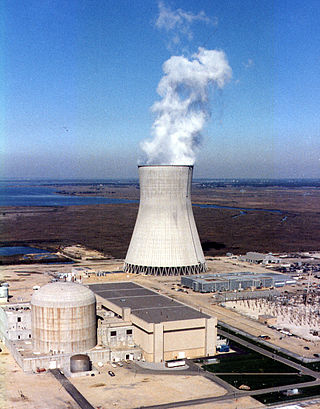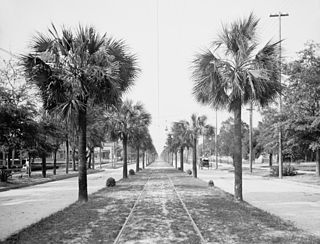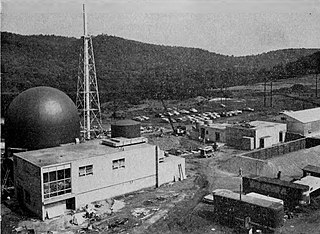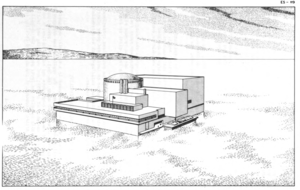The Public Service Enterprise Group (PSEG) is a publicly traded diversified energy company headquartered in Newark, New Jersey, US established in 1985 with a legacy dating back to 1903.

Hope Creek Nuclear Generating Station is a thermal nuclear power plant located in Lower Alloways Creek Township, in Salem County, New Jersey, United States, on the same site on Artificial Island as the two-unit Salem Nuclear Power Plant. The plant is owned and operated by PSEG Nuclear LLC. It has one unit, a boiling water reactor (BWR) manufactured by GE. The complex was designed for two units, but the second unit was cancelled in 1981. It has a generating capacity of 1,268 MWe. The plant came online on July 25, 1986, licensed to operate until 2026. In 2009, PSEG applied for a 20-year license renewal, which it received in 2011 to operate until 2046. With its combined output of 3,572 megawatts, the Salem-Hope Creek complex is the largest nuclear generating facility in the Eastern United States and the second largest nationwide, after the Palo Verde Nuclear Generating Station in Arizona.

Oyster Creek Nuclear Power Station was a single unit 636 MWe boiling water reactor power plant in the United States. The plant is located on an 800-acre (3.2 km2) site adjacent to Oyster Creek in the Forked River section of Lacey Township in Ocean County, New Jersey. At the time of its closure, the facility was owned by Exelon Corporation and, along with unit 1 at Nine Mile Point Nuclear Generating Station, was the oldest operating commercial nuclear power plant in the United States. The plant first started commercial operation on December 23, 1969, and is licensed to operate until April 9, 2029, but Oyster Creek was permanently shut down in September 2018. The plant got its cooling water from Barnegat Bay, a brackish estuary that empties into the Atlantic Ocean through the Barnegat Inlet.

The Callaway Plant is a nuclear power plant located on a 2,767 acres (1,120 ha) site in Callaway County, Missouri, near Fulton, Missouri. It began operating on December 19, 1984. The plant, which is the state's only commercial nuclear unit, has one 1,190-megawatt Westinghouse four-loop pressurized water reactor and a General Electric turbine-generator. It is owned by the Ameren Corporation and operated by subsidiary Ameren Missouri. It is one of several Westinghouse reactors built to a design called Standard Nuclear Unit Power Plant System, or SNUPPS.

Turkey Point Nuclear Generating Station is a nuclear and gas-fired power plant located on a 3,300-acre (1,300 ha) site two miles east of Homestead, Florida, United States, next to Biscayne National Park located about 25 miles (40 km) south of Miami, Florida near the southernmost edge of Miami-Dade County. The facility is owned by Florida Power & Light.

Surry Power Station is a nuclear power plant located in Surry County in southeastern Virginia, in the South Atlantic United States. The power station lies on an 840-acre (340 ha) site adjacent to the James River across from Jamestown, slightly upriver from Smithfield and Newport News. Surry is operated by Dominion Generation and owned by Dominion Resources, Inc.

The Prairie Island Nuclear Generating Plant is an electricity-generating facility located in Red Wing, Minnesota, along the Mississippi River, and adjacent to the Prairie Island Indian Community reservation.

The Virgil C. Summer Nuclear Power Station occupies a site near Jenkinsville, South Carolina, in Fairfield County, South Carolina, approximately 20 miles (32 km) northwest of Columbia.

Point Beach Nuclear Plant is a nuclear power plant located on Lake Michigan in the town of Two Creeks, Wisconsin, United States. The plant was built by Wisconsin Electric Power Company, and previously operated by the Nuclear Management Company. The plant is currently owned and operated by NextEra Energy Resources, of Juno Beach, Florida.

The city of Jacksonville, Florida, began to grow in the late 18th century as Cow Ford, settled by British colonists. Its major development occurred in the late nineteenth century, when it became a winter vacation destination for tourists from the North and Midwest. Its development was halted or slowed by the Great Fire of 1901, the Florida Land Bust of the 1920s, and the economic woes of the 1960s and 70s. Since the late 20th century, the city has experienced steady growth, with a new federal building constructed in downtown in 2003.

The AP1000 is a nuclear power plant designed and sold by Westinghouse Electric Company. The plant is a pressurized water reactor with improved use of passive nuclear safety and many design features intended to lower its capital cost and improve its economics.

The Saxton Nuclear Experiment Station, also known as the Saxton Nuclear Generating Station or Saxton Nuclear Experimental Corporation Facility, was a small nuclear power plant located in Bedford County, near Saxton, Pennsylvania.
Joseph H. Cury was the owner of the Mandarin Super Market and a resident of Mandarin, Florida. He was known as the founder of POWER, an advocacy group on utility rates, and as an opponent of the Dames Point Bridge and nuclear power plants.

Floating nuclear power stations are vessels designed by Rosatom, the Russian state-owned nuclear energy corporation. They are self-contained, low-capacity, floating nuclear power plants. Rosatom plans to mass-produce the stations at shipbuilding facilities and then tow them to ports near locations that require electricity.
The Atlantic Nuclear Power Plant was a proposed floating nuclear power plant located off the coast of New Jersey. It was proposed in the 1970s by the Public Service Electric and Gas Company. Two Westinghouse 1,150 MWe (net) pressurized water reactors were ordered in 1972, and another two Westinghouse 1,150 MWe (net) reactors were ordered in 1973. The four unit power plant proposal was canceled in 1978.
Alexander Philip "Zeke" Zechella was a United States Navy veteran and pioneer in the usage of nuclear energy who headed several major companies before retiring in Jacksonville, Florida, and assisting local non-profit agencies.

Blount Island is an island of approximately 2,000 acres (8.1 km2) on the St. Johns River in Jacksonville, Florida, nine nautical miles (16.7 km) west of the Atlantic Ocean. One of three public cargo facilities at the Port of Jacksonville is located there, and it is also the site of the United States Marine Corps Blount Island Command.
Ocean Wind is a proposed utility-scale offshore wind farm to be located on the Outer Continental Shelf approximately 15 miles (24 km) off the coast of Atlantic City, New Jersey. It is being developed by Ørsted US Offshore Wind in conjunction with Public Service Enterprise Group (PSE&G). Construction is planned to begin in the early 2020s; expected commissioning is in 2024. The closed Oyster Creek Nuclear Generating Station and B.L. England Generating Station would provide transmission points for energy generated by the wind farm. At 1,100 MW, it will be the largest producer of wind power in New Jersey and largest offshore wind farm in the United States.
The TR-2 nuclear reactor, also known as the Westinghouse Test Reactor or Westinghouse Testing Reactor (WTR) was a small research and test reactor designed and manufactured by Westinghouse Electric Corporation at their Waltz Mill site near Madison, Pennsylvania, approximately 30 miles southeast of Pittsburgh. TR-2 was the first privately owned research and test reactor. The reactor suffered an accident which involved severe fuel damage in 1960.

Nuclear power has been widely established in Pennsylvania since the 1950s, and has grown to provide almost 25% of the energy produced in PA. This is achieved through the four active reactors currently operating. There are five inactive reactors in PA, including Three Mile Island, which had a partial meltdown and caused a reevaluation of nuclear reactor safety practices.


















